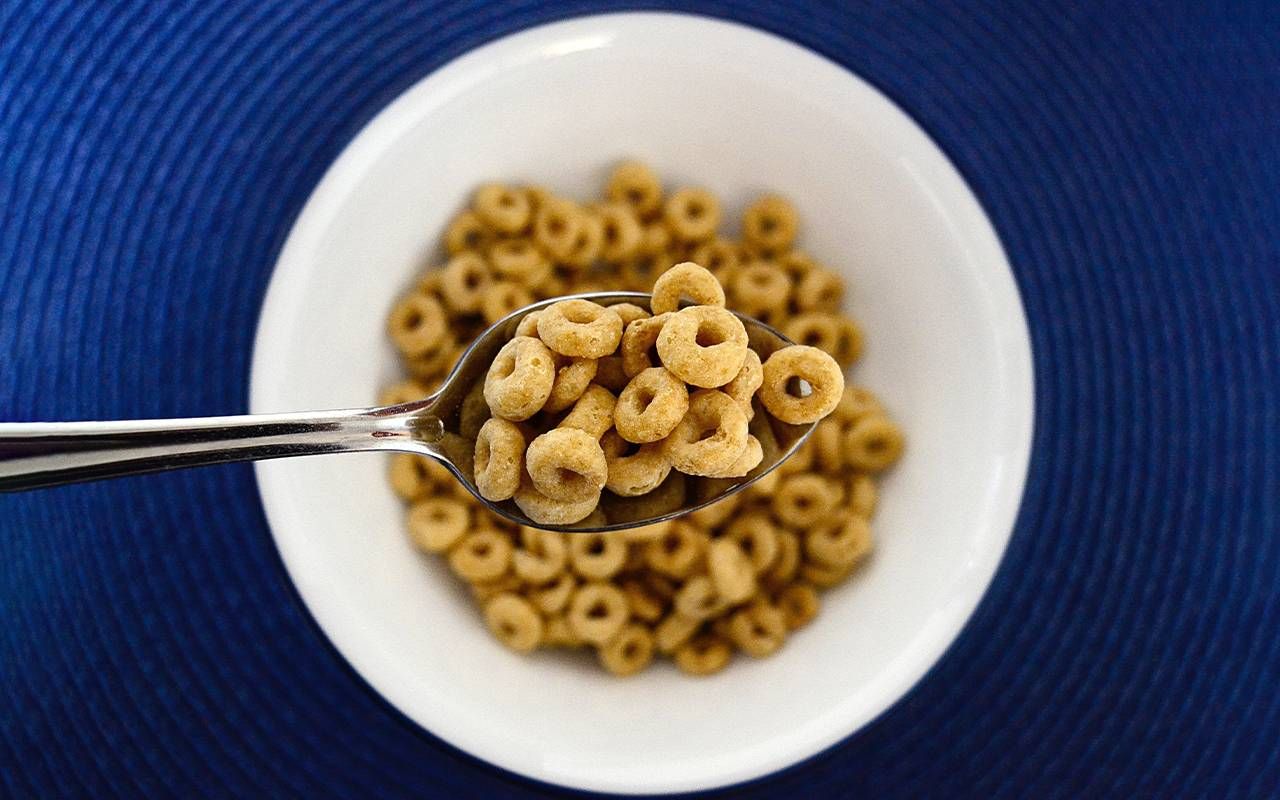I'm a Dietitian and I Eat Processed Foods Every Day
As a registered dietitian, I don't encourage a steady diet of processed foods but I don't avoid them either
Ultra-processed foods (UPF) have been condemned for contributing to chronic conditions, including obesity, heart disease and cancer. As a registered dietitian, I don't encourage a steady diet of ultra-processed foods, including fast food burgers, chips and cookies, but I don't avoid them, either.
There are many reasons why I make it a point to include UPF in my diet every day and why I cringe at fear-mongering headlines calling for their complete elimination.

Why Food Is Processed
Most of the food you eat is processed, which means it's undergone one or more changes, such as milling, pasteurization or cooking. Olive oil, canned tuna fish and artisanal sourdough bread from your local bakery are all examples of processed products.
On one end, you have foods that are minimally processed. On the other end, more lower-nutrient foods that typically contain added sodium, sugar, fats and more.
In addition to making food more palatable and safer, processing protects against food waste, ensures convenient, nutritious food year-round, and can make food easier to digest and tolerable for those with disabilities and allergies and intolerances, including celiac disease and lactose intolerance.
Through fortification and enrichment, processing provides greater access to nutrients, often in relatively low-cost foods. And last but not least, processed food saves time.
Processing has a downside, including foods with fewer nutrients and added sugar, fat, sodium, artificial colors and flavors (like flaming hot, bright orange snack chips). Food manufacturers often add fiber, vitamins and minerals to processed food, but recreating foods in their original forms is impossible.
"The most important thing to understand about food processing is that it's done on a spectrum. On one end, you have foods that are minimally processed. On the other end, more lower-nutrient foods that typically contain added sodium, sugar, fats and more," says Kathleen Zelman, MPH, RDN, nutrition communications consultant and host of the "True Health Revealed" podcast. "Those foods are labeled as ultra-processed."
Is There a Problem With Ultraprocessed Foods?
The processing level is based on the number of changes made to milk, meat, grains and other essential commodities. According to NOVA, a system that researchers typically use to classify foods to study their health effects, ultra-processed foods undergo the most alterations from their original form.
"The most important thing to understand about food processing is that it's done on a spectrum."
But NOVA is controversial because it doesn't consider the nutritional value of food in any of its four categories. Yet, all UPFs are not created equal.
"The current classification system puts a lot of nutritious foods in the UPF group," says Julie Hess, Ph.D., a research nutritionist in USDA's Agricultural Research Service.
Hess and her team recently published a study in the Journal of Nutrition that showed that a seven-day, 2000-calorie eating plan with 91% of calories from UPF was in line with the eating recommendations in the Dietary Guidelines for Americans.
In addition, the plan scored 86/100 on the Healthy Eating Index (HEI), a measure of diet quality used by the government. For reference, the average American diet derives about 60% of its calories from UPF and scores just 58-64 on the HEI for people ages 50 and older.
How can a diet high in UPF benefit you? The answer: it's all about food choice. "Our study showed that there's enough nutritious UPF that can satisfy nutrient needs as part of a balanced diet," says Hess.
Hess' study didn't explore the health effects of the UPF eating plan, but several studies have found associations between higher UPF consumption and certain chronic conditions, including obesity. However, the evidence is muddled. Most UPF studies have assessed UPF intake in large groups and were not designed to determine if UPF causes illness in individuals.
In addition, researchers don't always distinguish between more nutritious UPF, including certain breakfast cereals, and low-nutrient choices with higher sugar, fat, or sodium content, such as sugary drinks. And certain UPFs have negative and positive health effects.
It's best to choose foods based on their nutritional merit, including the amount of added sugar, sodium and saturated fat they provide.
A 2022 study in The British Medical Journal found no association between overall UPF intake and the risk of colorectal cancer in women. However, when the researchers looked at food subgroups, they found eating more ready-to-eat/mixed dishes was associated with a greater risk of colon cancer in women, while sweetened yogurt and dairy-based desserts decreased the likelihood.
Making it even more complicated is that it's unclear whether the processing itself is harmful to health or if UPFs serve as markers for a poor overall diet, Hess says. Individuals with a high UPF intake may eat them as part of a diet that lacks adequate fruits, vegetables, low-fat dairy foods, whole grains and lean protein sources.
That said, eliminating all UPF foods from your diet is unnecessary and may result in poor nutrition. For example, a 2022 European Journal of Nutrition review found that excluding UPF grain foods fortified with vitamins and minerals would lower intakes of vital nutrients, including iron and several B vitamins.
People with a tight food budget, those with a small appetite, and women of childbearing age benefit the most from fortified grains, which are unfortunately in the same NOVA category as candy, crackers and potato chips.
Don't Panic About Ultra-processed Foods
Given the lack of agreement about UPF intake and disease in the research, it is no surprise that consumers are also unsure about them. One study found that many people incorrectly categorized unprocessed and lightly processed products, such as baby carrots, fresh orange juice and butter, as UPF.
Uncertainty about UPF can result in unnecessarily avoiding nutritious and affordable foods. The same goes when we condemn all UPFs without considering what they have to offer first.
How do you know if packaged food is good for you? Instead of thinking of food as good or bad based on processing, read the label. "Understanding UPFs requires attention to details on food packaging and knowing how that food fits into your overall eating plan," Zelman says.
"It's best to choose foods based on their nutritional merit, including the amount of added sugar, sodium and saturated fat they provide," she adds.
Eating patterns matter the most when it comes to supporting health, and there's room for UPF in most people's diets. "Nutrition is nuanced and given the little amount of knowledge that we have about UPF, it's wise to focus on foods you know are nutrient-dense, affordable and figure into your cultural preferences," Hess says.
That's good advice and exactly why I'll continue to include Cheerios, packaged whole white and whole wheat bread, tofu, peanut butter (not the natural kind), jarred marinara sauce, soy-based veggie burgers and salted pistachios in my balanced eating plan. There's just no good reason not to.

Ward is the author or co-author of eight nutrition, food, and health books. Her most recent book is The Menopause Diet Plan, A Natural Guide to Hormones, Health, and Happiness (co-author). Ward lives in the Boston, MA, area. Read More

